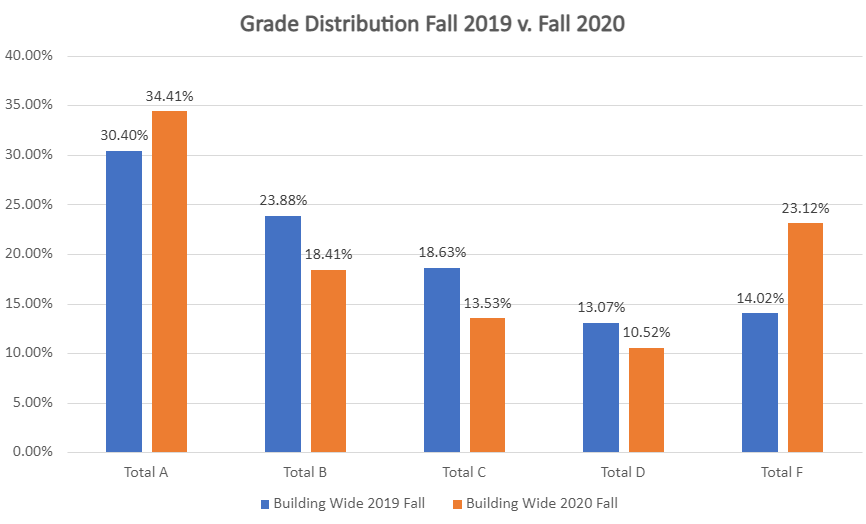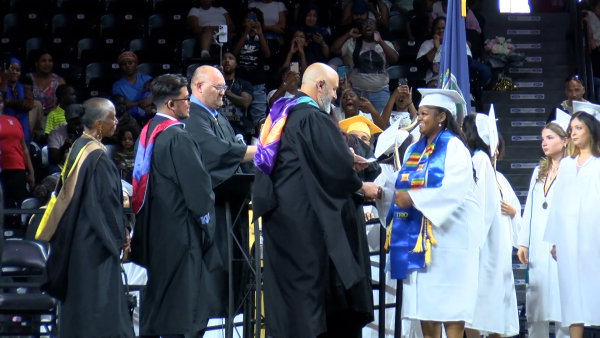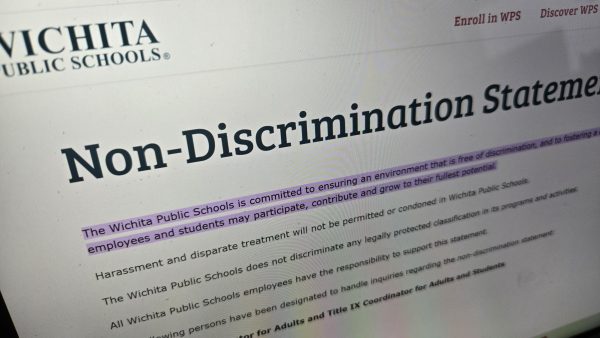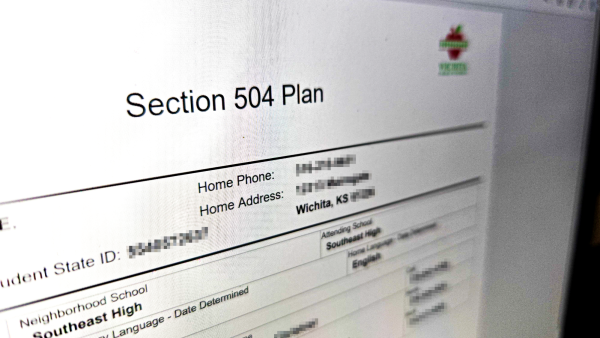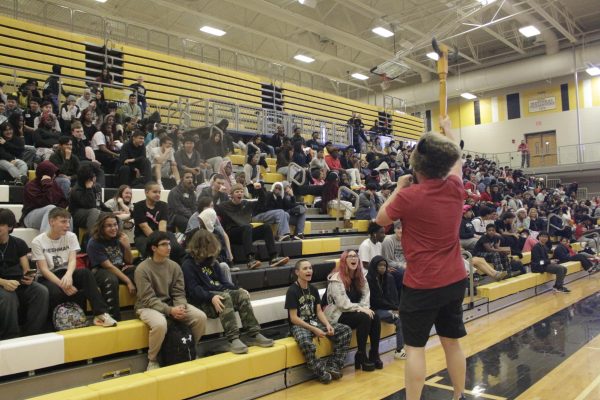The Increase in Failure Rates
This inverted bell curve shows an increase in the percentage of F’s during the first semester of 2019 to the first quarter of 2020.
When grades were finalized for the first quarter, several teachers noticed a large increase in the number of students who were failing their classes. Some compared this to an “inverse bell curve” with several students excelling and many not doing anything at all.
According to data from Southeast High School, the failure rate for the first quarter was higher than last year.
“We did have more F’s by about, which is very concerning, we had about 9% more F’s, but we also had about 4% more A’s,” Assistant Principal Jacob Henning said.
With everything surrounding the environment of remote learning, teachers have noticed and are not surprised by the increased failure rates this year.
“Yeah, I have noticed an increase in failure rates, and I know that’s something that’s being addressed not only in our district but, you know, nationwide,” history teacher Jonathan Buster said.
With increase in A’s and F’s, the data shows that the percentage of all other letter grades has gone down as well. This inverted bell curve has made teachers believe that students are either doing tremendously well or extremely poorly in this remote learning environment
“Some students just learn a lot easier, you know. They’re more comfortable at home so it would be a lot easier for them to learn,” Jr. Matthew Brown said, “while other kids, like me, for example, we’re not a very big fan of this and we don’t like to do it and would rather go back to school ‘cause I did a lot better back in school than I am now, and change like that makes it so, well, it’s likely it’s split almost perfectly either failing or doing good. It just depends on the student, and sadly, the ones who are failing took a bigger hit.”
Although there is evidence of some students struggling with their grades this year, there are several factors that may contribute to this issue. One of these factors include the distractions that can occur while at home.
“Most people, you know, they pay attention in class, or they just play a game during it, or they have the screen set up on the side… They don’t mostly pay attention for the main part or like, you know, they go play games when it’s time to do work,” Brown said.
“I’ve heard [students] talking about how they have all these new responsibilities,” Buster said, “like they have to babysit little siblings or, you know, they’ve got to make lunch for their siblings. They have a lot of extra roles that they now didn’t normally have. Especially with the elementary schools being remote as well, a lot of these siblings are playing kinda’ parent duty.”
One of the major factors contributing to the increased failure rates is the lack of motivation in students to want to do work and participate in class. This lack of motivation causes some attendance issues as students join classes late, leave classes early, and even go as far as not logging into Microsoft Teams at all.
Branden Johnson, the Executive Director of Secondary School in USD 259, points to engagement as a big factor in the increased failure rate.
“The data point that sticks out the most that is the most concerning is the lack of student engagement that has taken place in the last nine weeks,” Johnson said. “We are finding that there are less students turning on their cameras and engaging in conversation, turning on their mics and answering, using the chat and responding, those types of things. Even turning in assignments in general is down this next nine weeks compared to the first nine weeks.”
According to Johnson, the average daily attendance of high schoolers this year was 89.9%. However, this data is misleading because some students are only logging into their classes to be counted as present in the attendance, but they are necessarily participating in the class.
“As far as hard data though everything else is roughly similar to what it was when you think about attendance and data like that but that doesn’t tell the whole story,” Johnson said.
The attendance policy this school year has also caused students to believe they have free rein. Consequences are seen as little to non-existent by students and teachers.
“I think it’s pretty lenient,” Business teacher Valerie Most said. “Personally, I think that students need to be on time, I start my classes on time so we can get moving so they have more time to work and get things done during class time. I think that they need to be in class just like we were in school. You’re not gonna’ go out and run an errand during my class. If you were in my class at Southeast… you’re gonna stay there, you’re gonna learn it and then you’re gonna run your errand during lunch or after school.”
Overall, many believe that the primary factors contributing to the higher failure rates are the lack of motivation and participation from students, not the actual difficulty of learning remotely.
“I think it’s mostly not participating and not showing up ‘cause like everyone, you know, before this even started, everyone said online school is gonna’ be so easy. If you look at it, it kind of is easy. The only struggle is, well, finding a passion,” Brown said.
On Jan. 21, the first semester of this school year will be finished for all USD 259 schools. As this day is nearing, grades are getting closer to becoming finalized, which is a concern for several students and teachers after seeing the outcomes that occurred from the first quarter of remote learning. If students did receive a grade of 50-59.5% this semester, they will have a chance to bring it up to a passing grade with Extended Learning Opportunity, which will start on Jan. 25 and run for two weeks.

